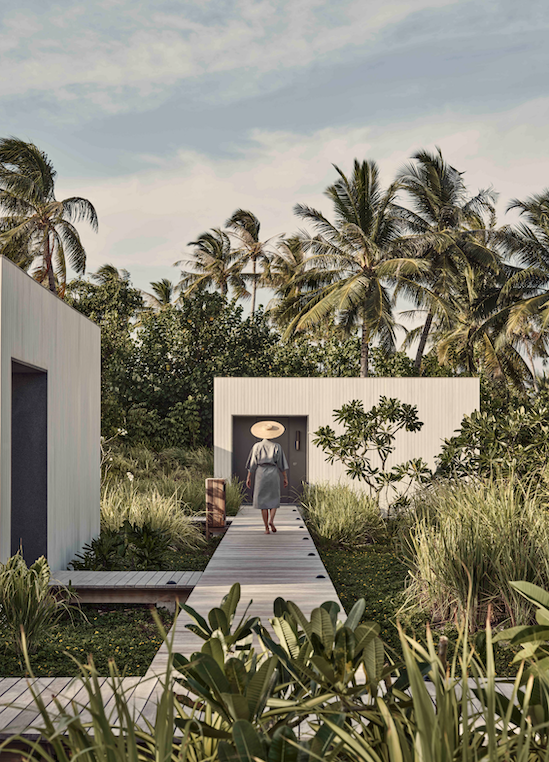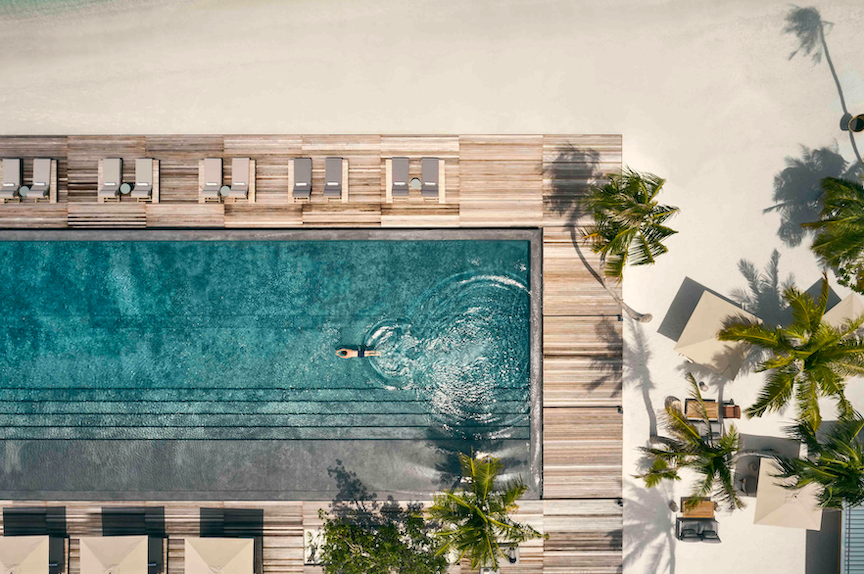
A CINEMA OF THE SEA: Architect and Auteur Marcio Kogan’s Patina Maldives.
Editorial
Architect and Auteur Marcio Kogan’s Patina Maldives.
Renowned Brazilian architect Marcio Kogan has a singular starting point for his creative process, evolving from his time as a filmmaker at university. “I always create a character that is going to live or use the space in question. He has a life story and is constantly moving through the project.” At Patina Maldives, a hotel positioned on newly-reclaimed sand from the sea, he and his team embodied a multitude of diverse characters, bringing varied life to the property. “One day we are enjoying loneliness and watching birds migrate, another we are barefoot dancing at the beach club or making love long before dawn. At times we are surrounded by our noisy kids wearing scuba diving masks.”

“I always create a character that is going to live or use the space in question. He has a life story and is constantly moving through the project.”

Working with developer Evan Kwee, Kogan and team would talk more about food, music, art, and feelings, rather than just architecture, in each meeting. Open and inspiring, “Kwee elegantly respected the work of the entire team.” And the work was sweeping, “we designed everything alongside various collaborators – from the territory design of a new island to the handles on the smallest cabinet, everything was co-created. We don’t always have this kind of opportunity. It was a great experience a privilege!” The project allowed the visionary to zoom his lens into the tiniest details while also encompassing a panorama of the place as a whole, the setting becoming the primary protagonist around which the rest of the cast connects and relates. “Along the Maldivan sand, skies and ocean, all architecture can do is humbly filter the light, frame the views, create different narratives as one strolls around the magnificent surroundings,” Kogan continues, “we were able to produce architecture that is much less important than nature. It is like the hotel does not exist in this place. Everything disappears. Life, people and nature are more important than architecture.” Still, the influence of Brazilian modernism – a radical force from the thirties – inhabits the fabric of the place, from its “elegant sobriety to the intense integration between interiors and exteriors. A linen curtain, translucent, removes boundaries between indoors and outdoors – a joyful experience for the senses, brought by natural materials like wood and stone, calm colours and organic fabrics, all bathed by sunlight, and shaded by permeable elements – pergolas, mashrabiyas or hollow brick walls.”
Words: Brodie Duncan
Read the full story in the first edition of MATTER OF HOW.
Released June 2024.
